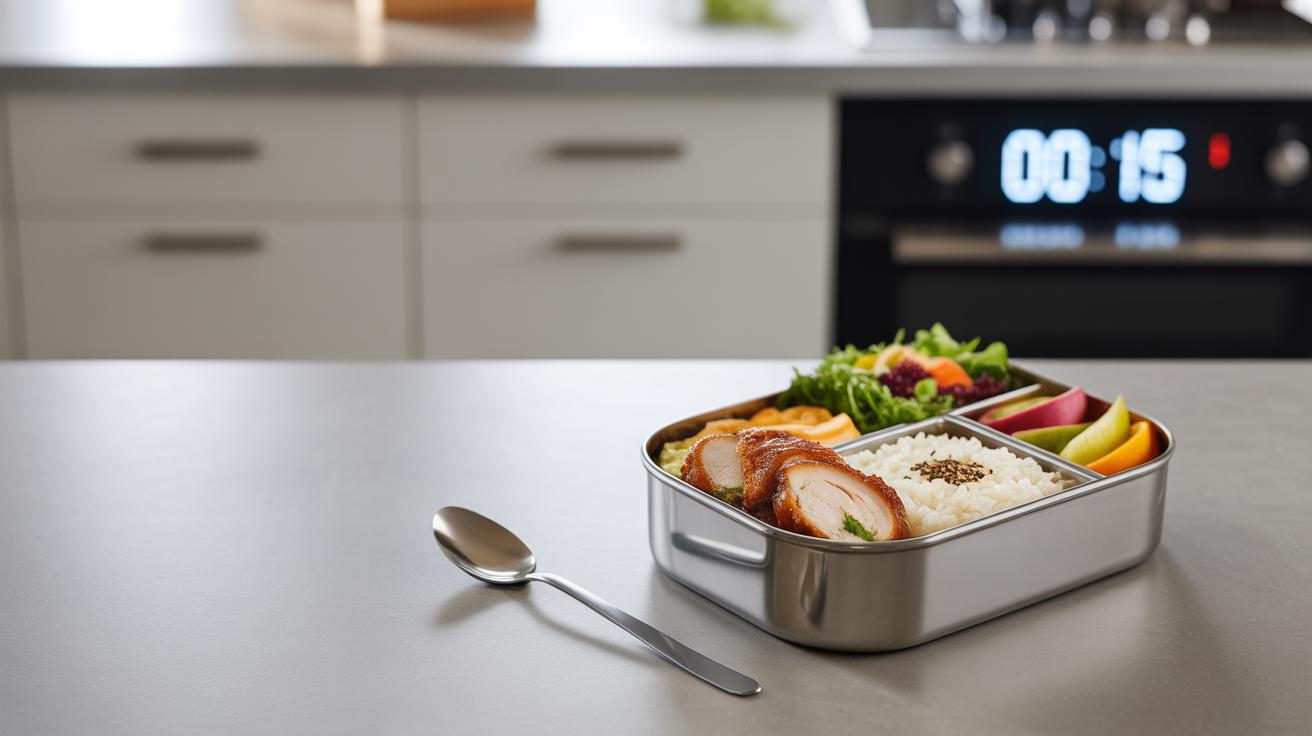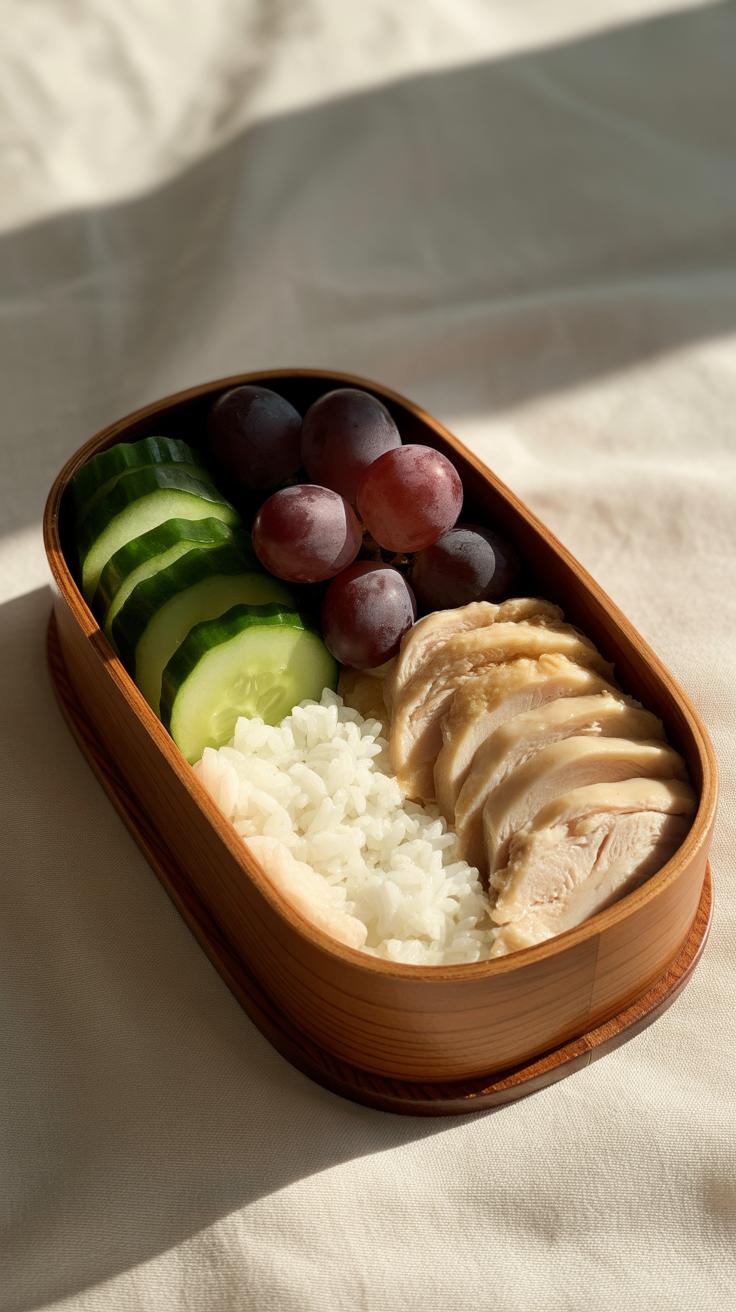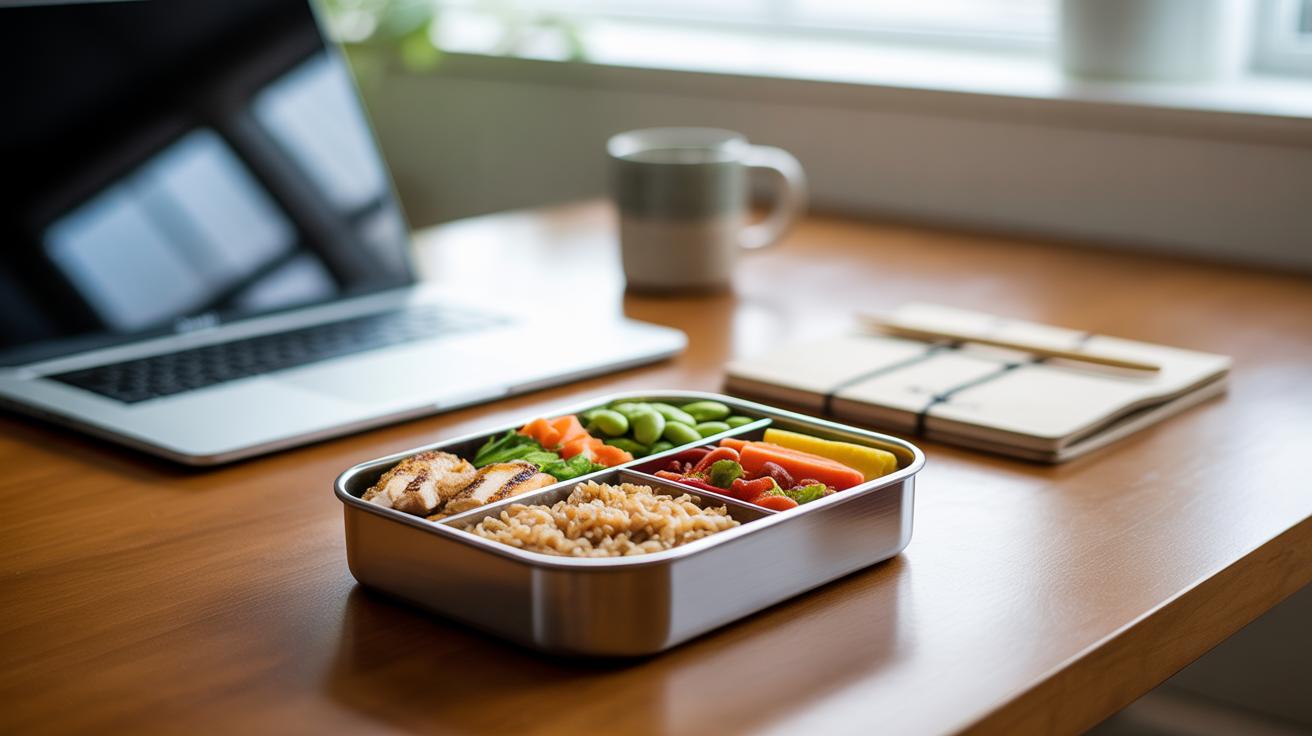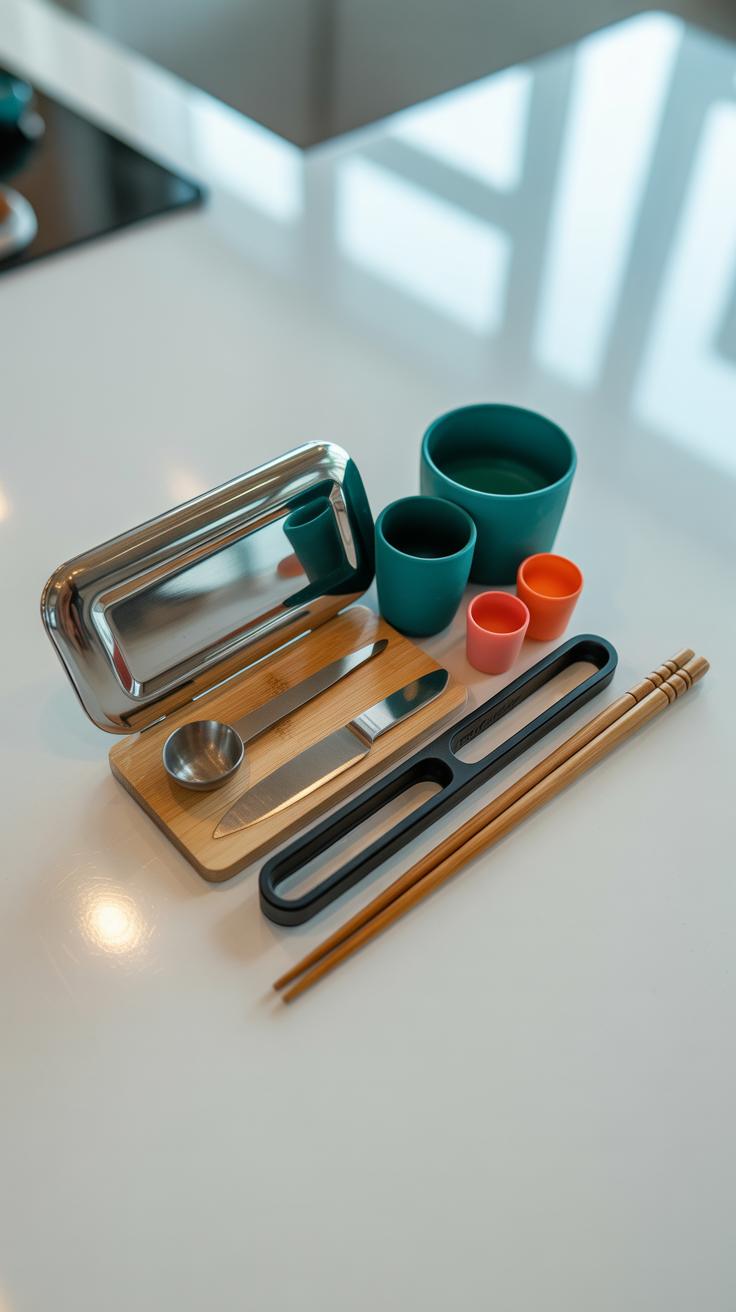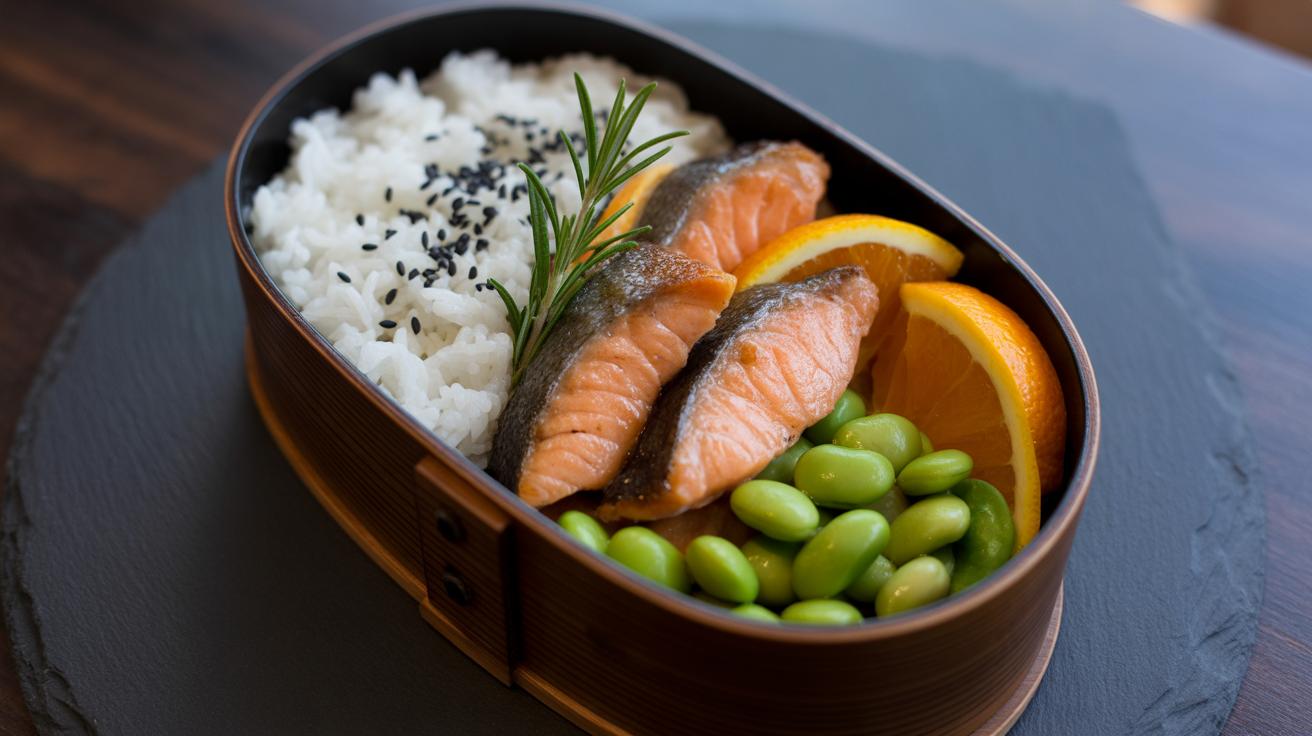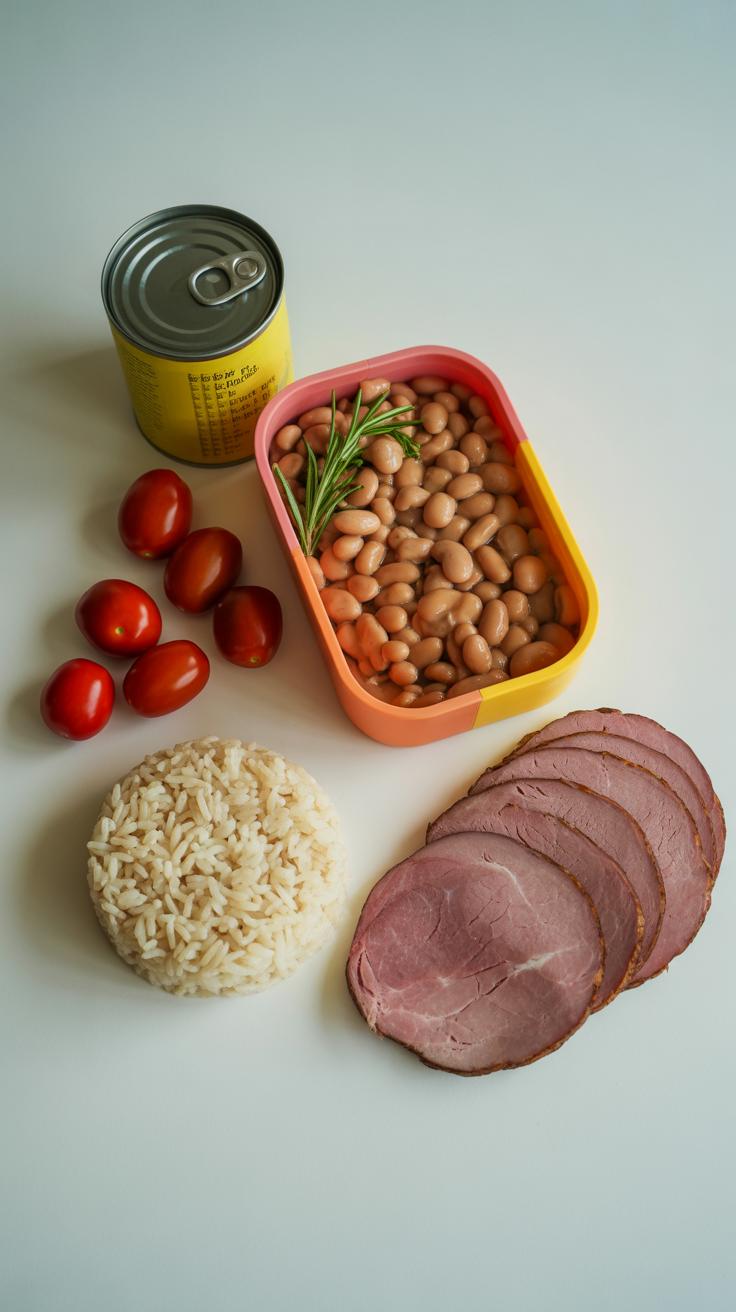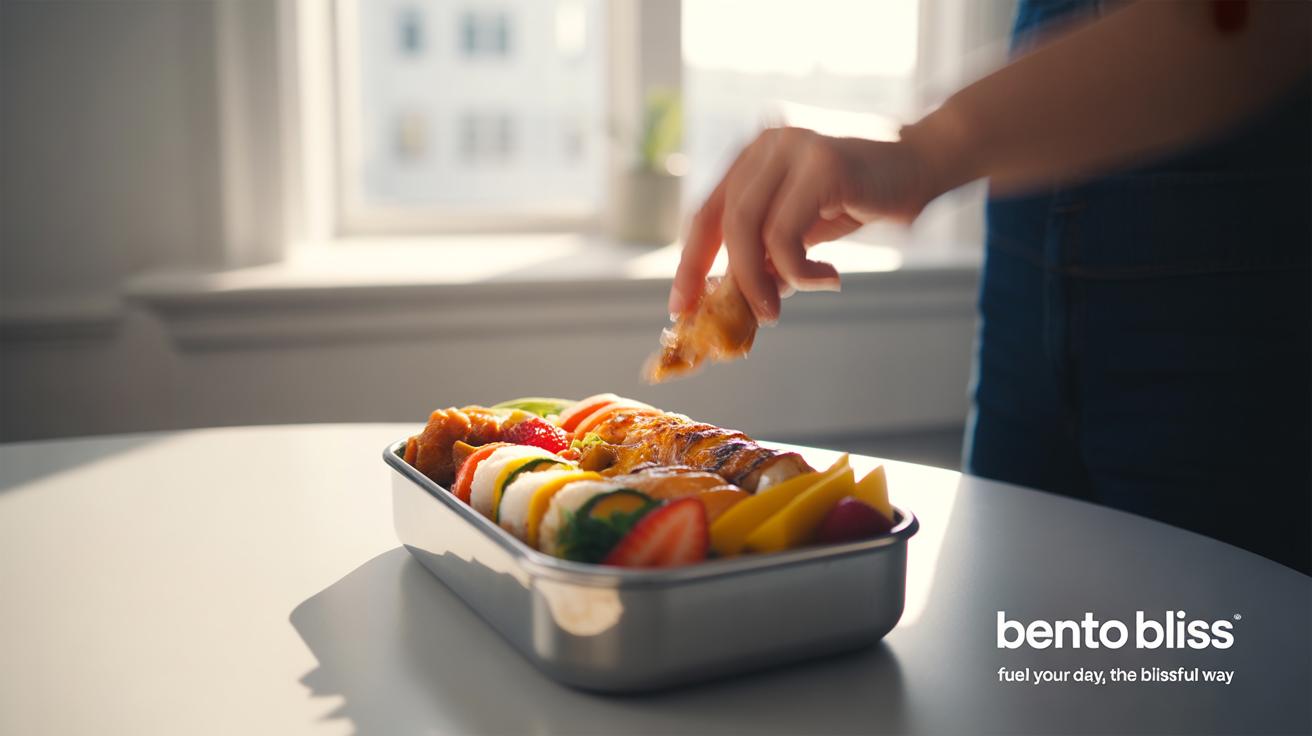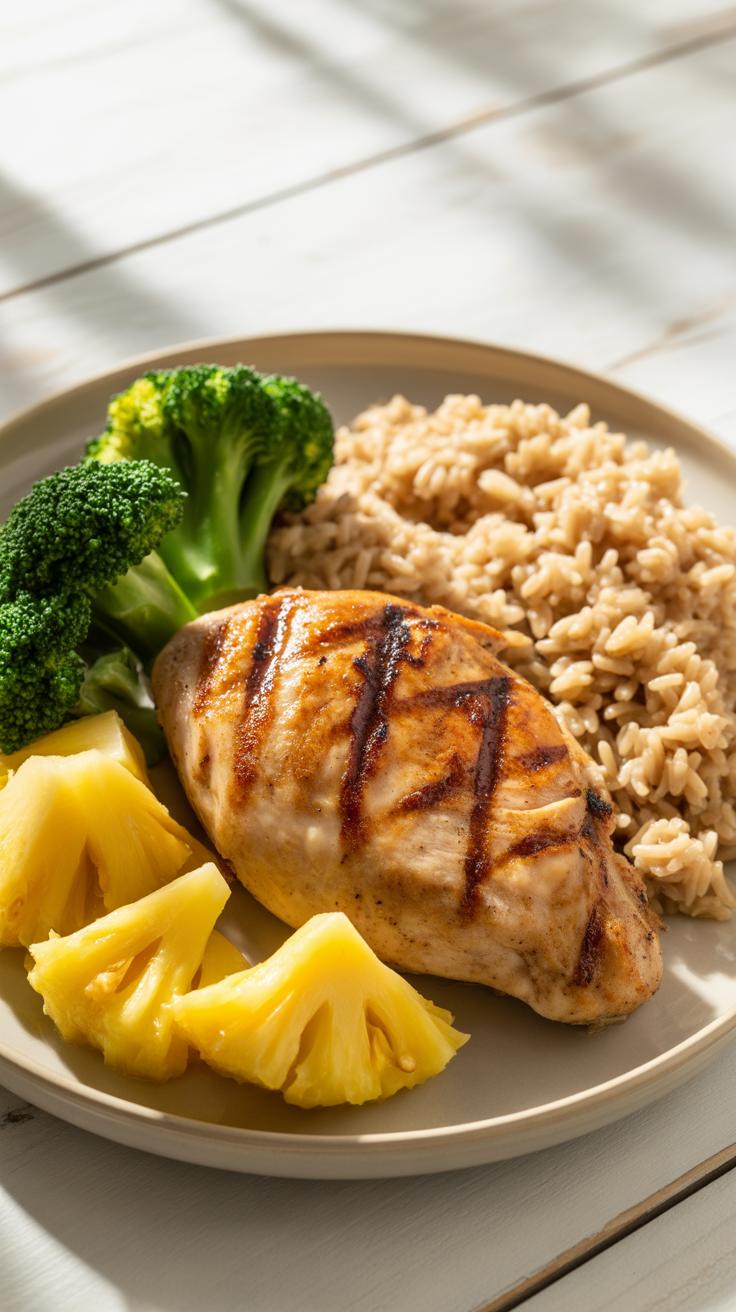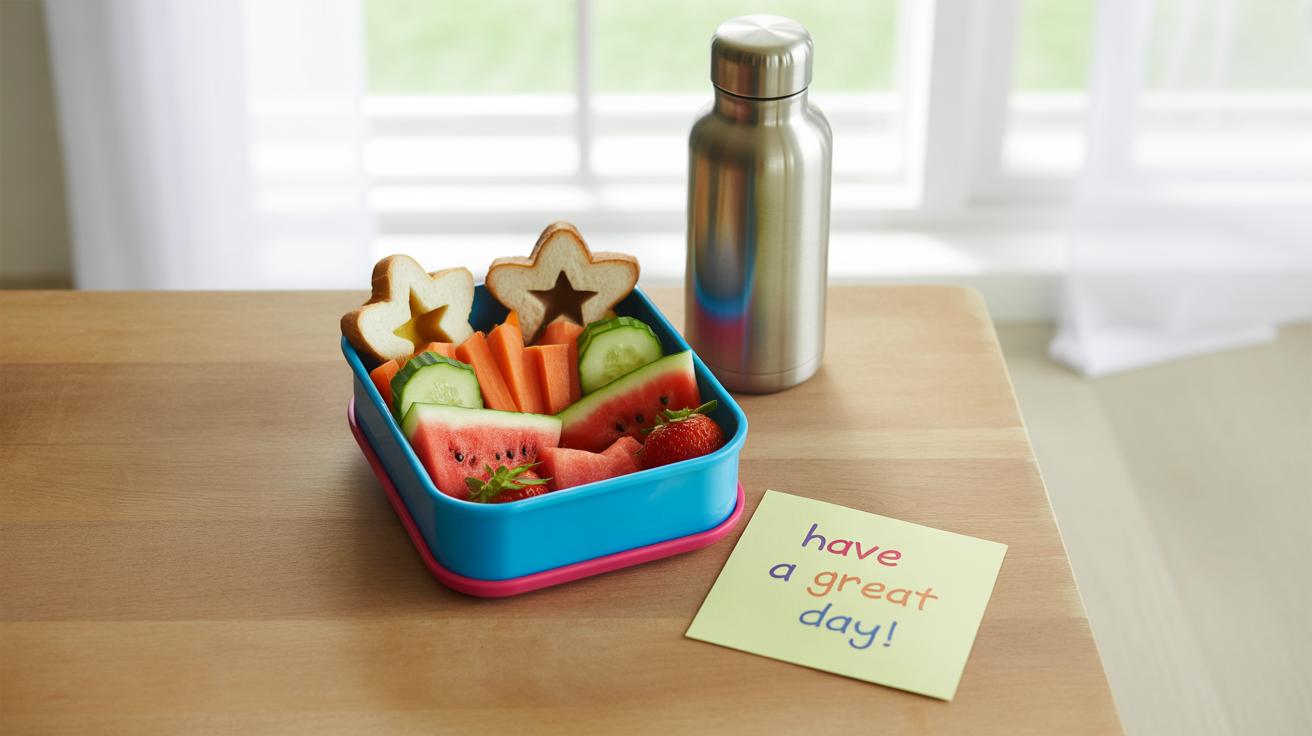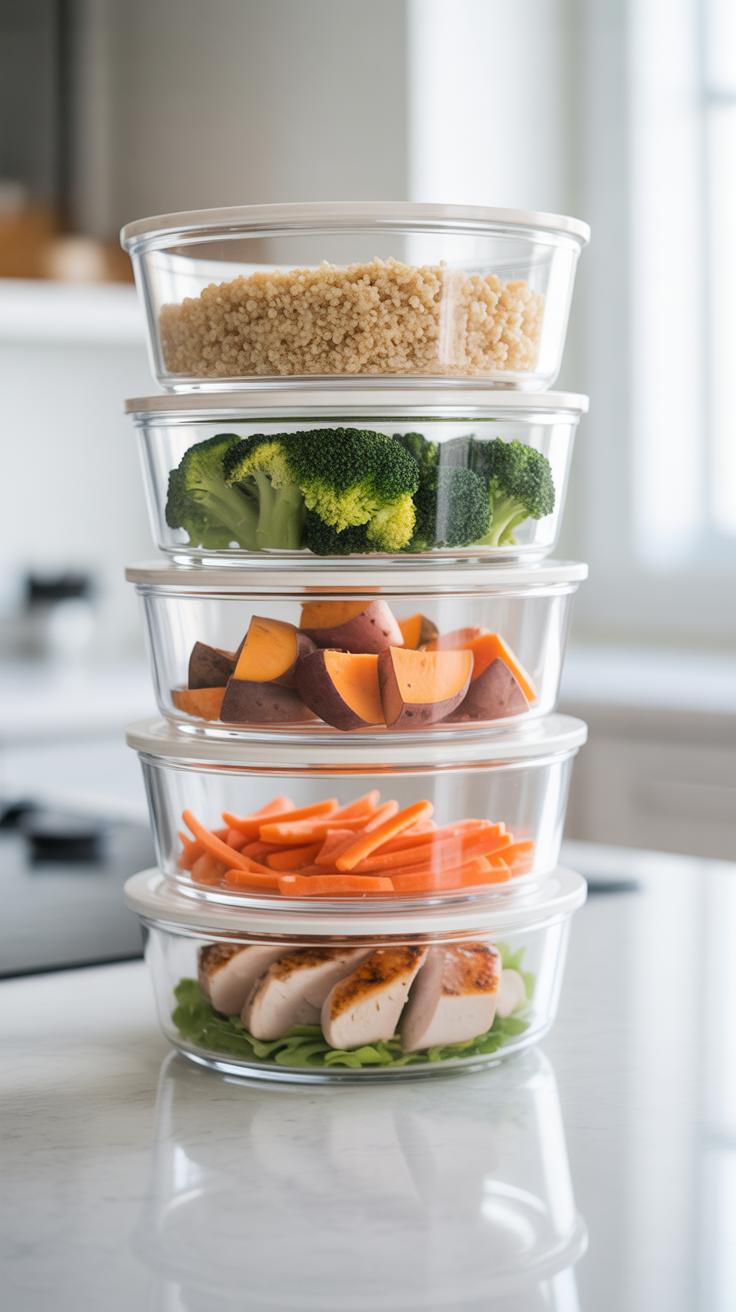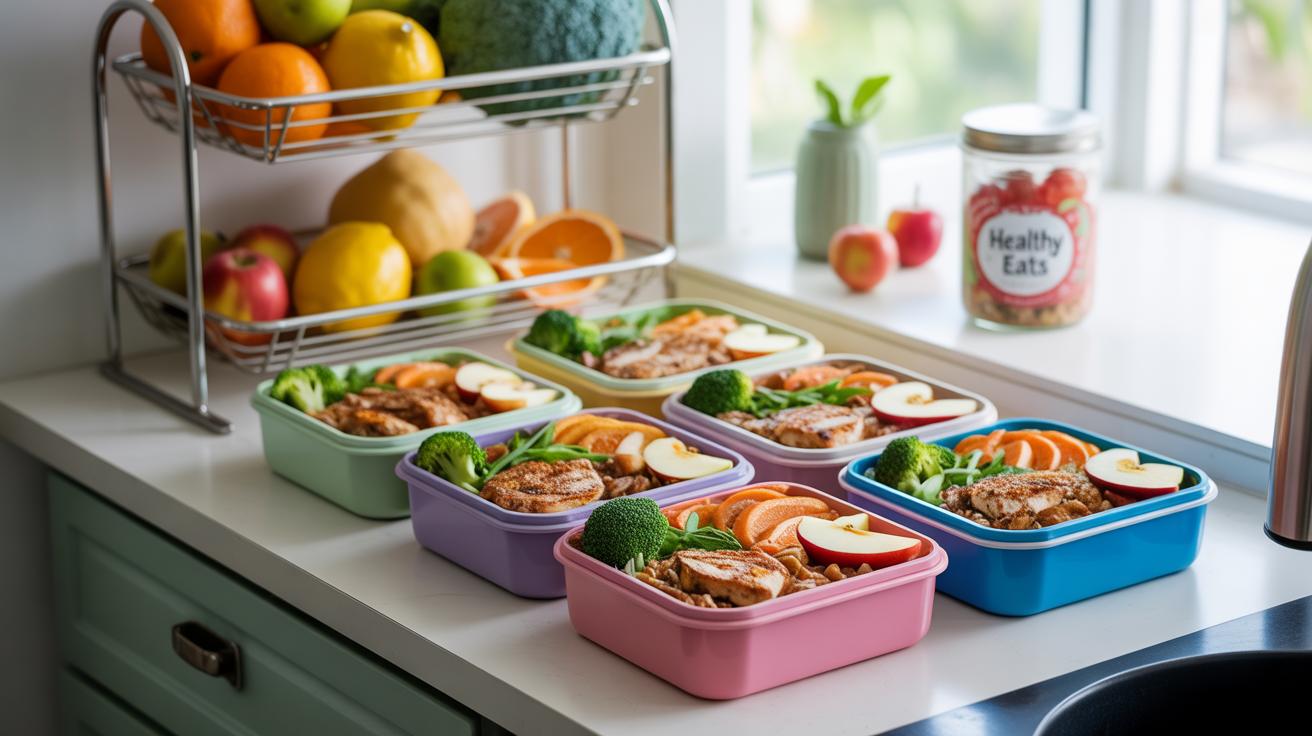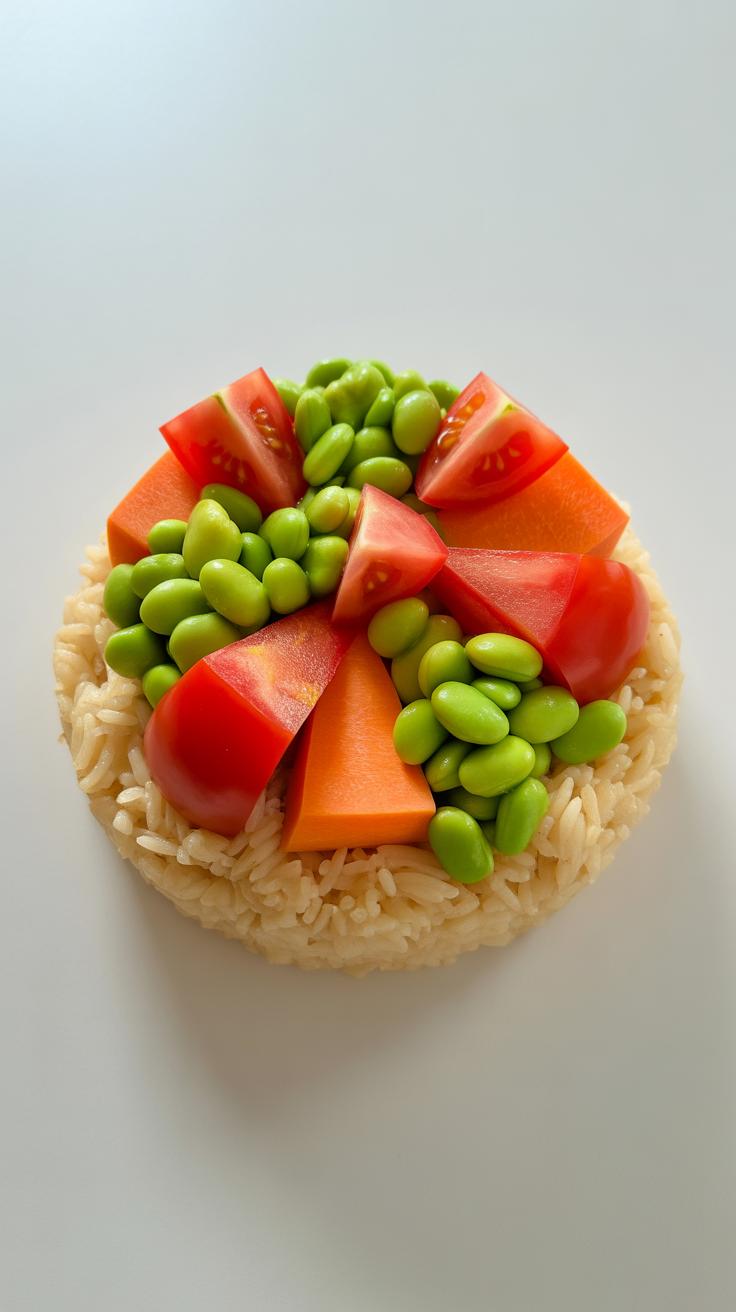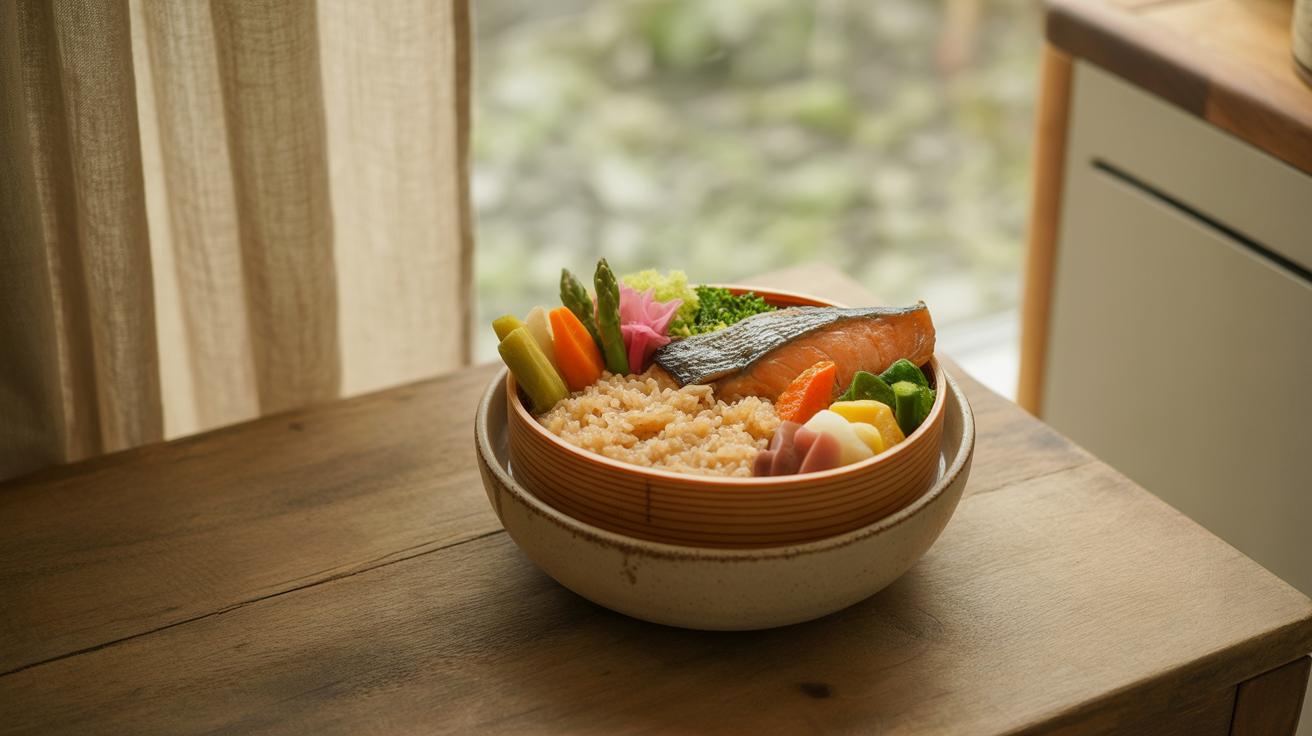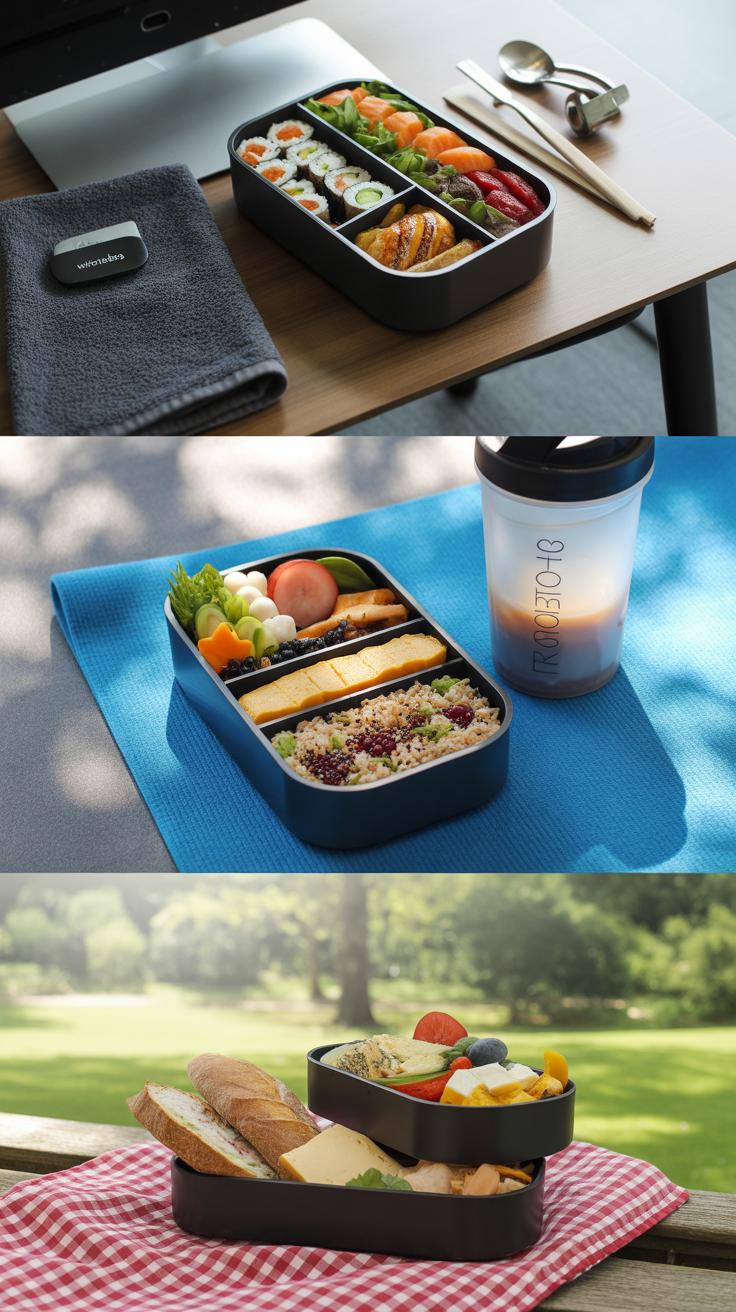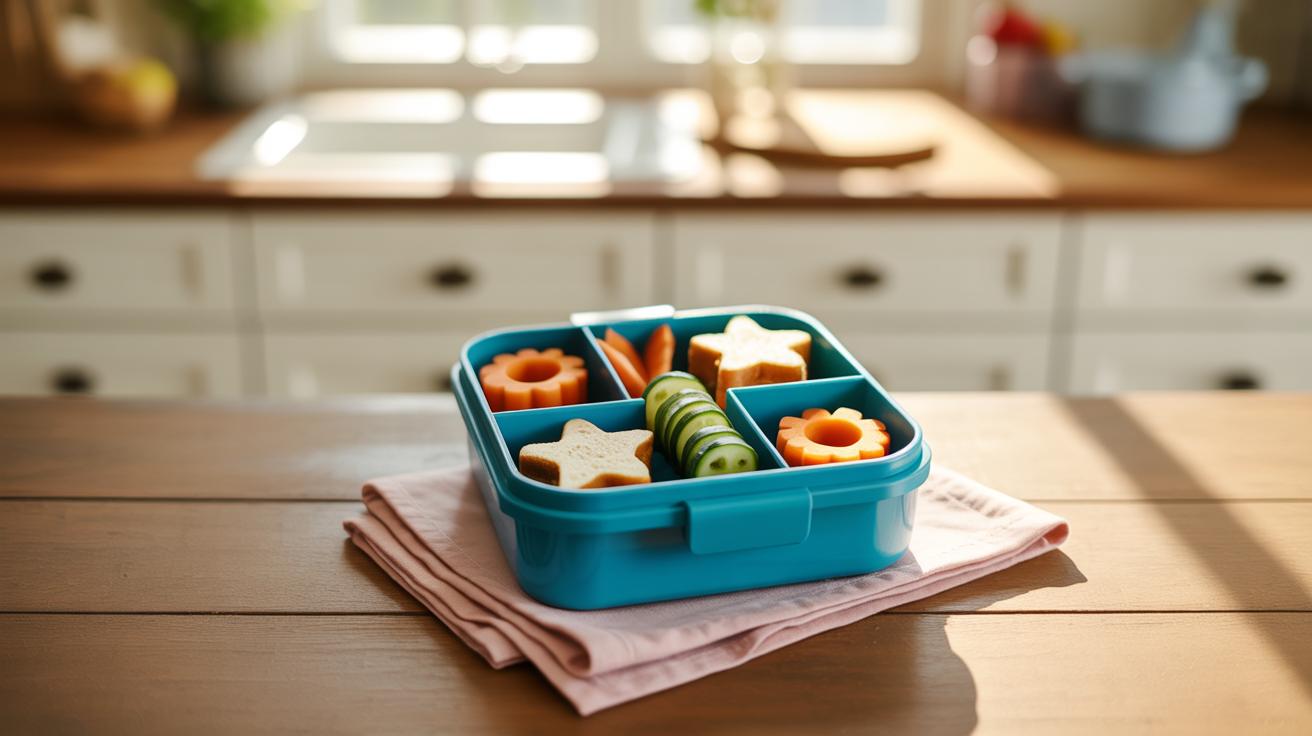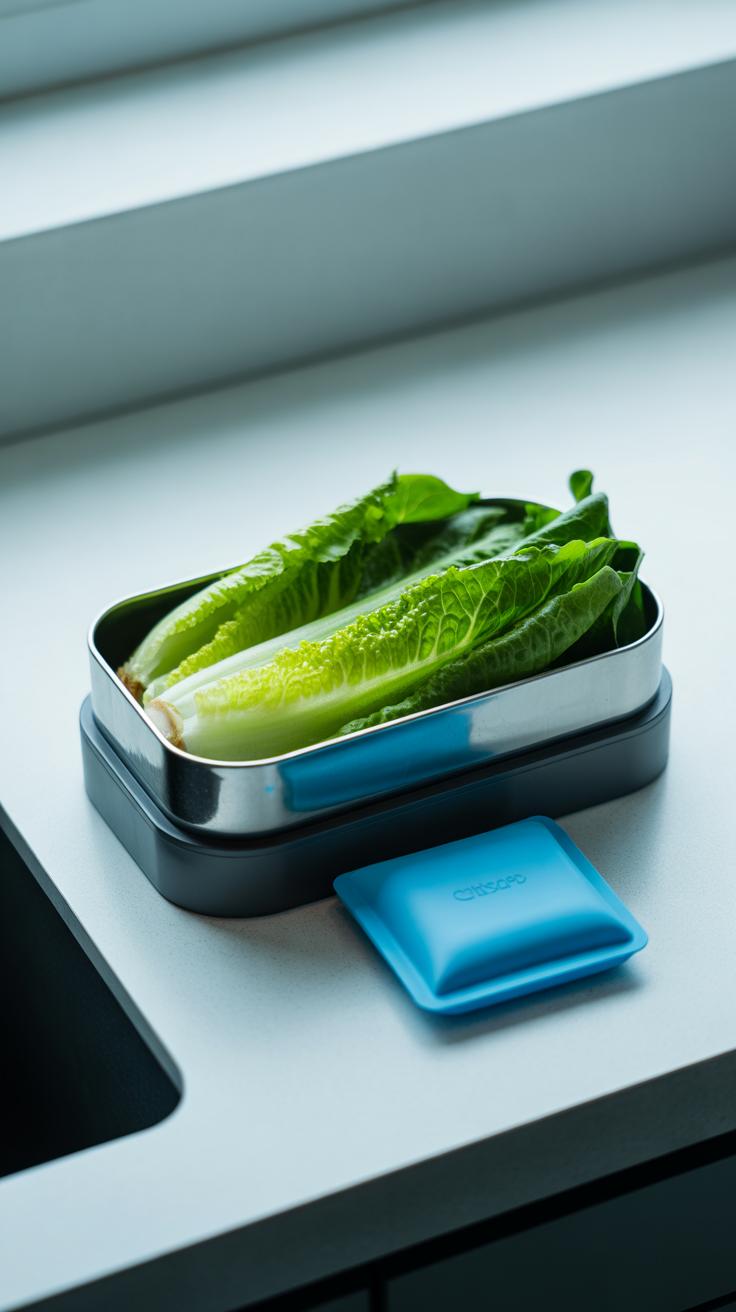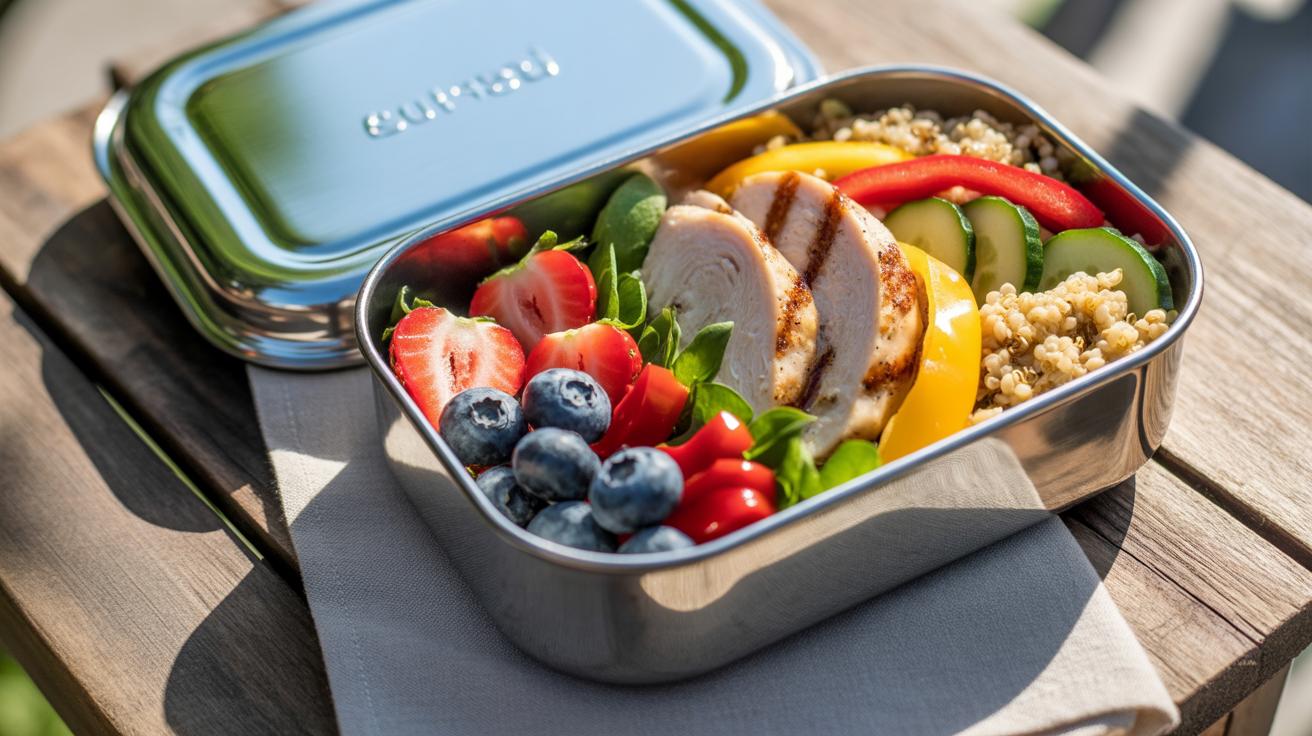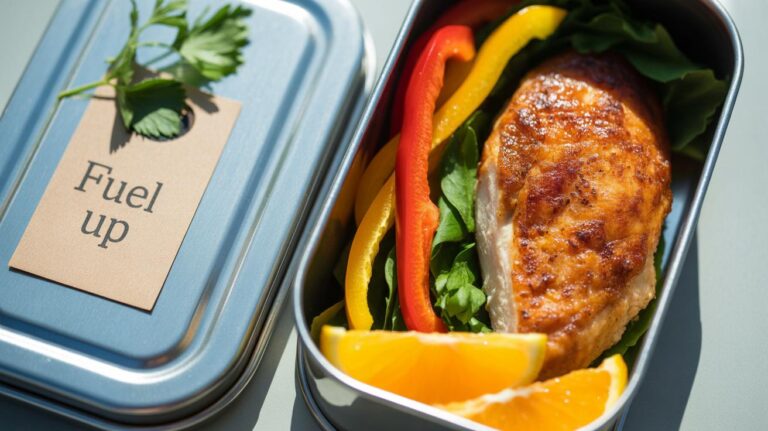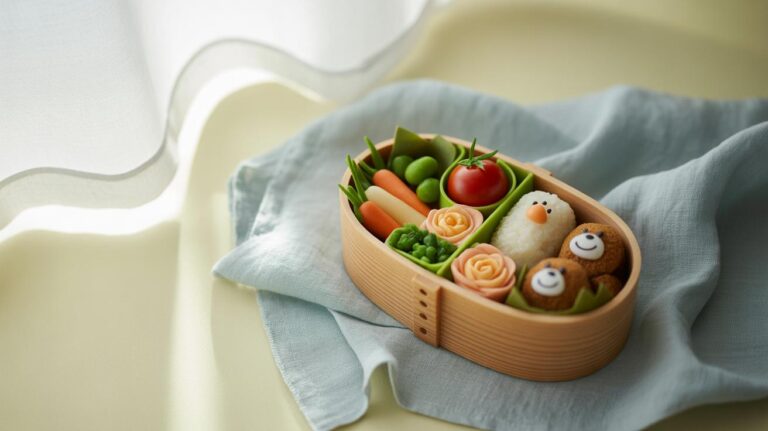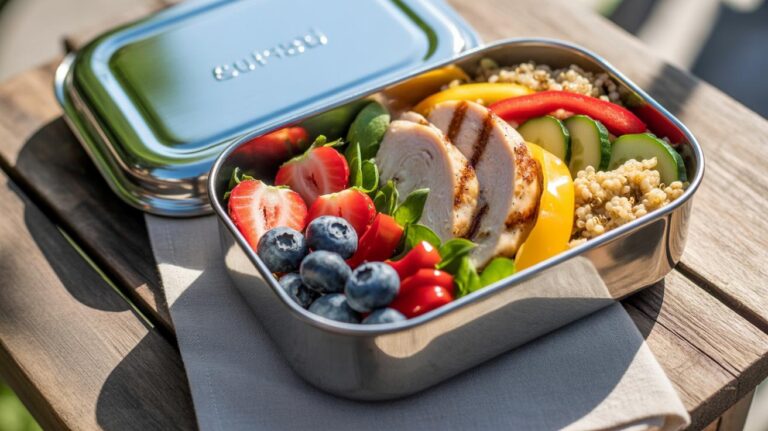Introduction
Bento is a traditional Japanese way of packing a meal in a box. It usually contains rice or noodles, fish or meat, and vegetables. Many people like bento because it is a convenient and balanced meal that you can take anywhere.
Making your own bento lunch can be fast and easy. This article will explore how you can prepare tasty and healthy bento lunches in just ten minutes. You will learn useful tips, recipes, and ideas that will help you eat well and save time during your busy day.
Understanding Bento Lunches
What is a Bento Lunch
A bento lunch is basically a single-portion packed meal, traditionally Japanese, but now enjoyed worldwide. It usually includes a mix of components that work together for a simple, balanced meal. Think of rice or noodles as the staple, paired with some kind of protein like fish, chicken, or tofu, and rounded out with vegetables—often pickled or cooked. The key is that these ingredients are placed side by side in separate compartments of a box, keeping flavors and textures distinct.
The compartments—or sometimes just sections separated by dividers or cups—help keep everything organized and visually appealing, which makes eating more enjoyable. I sometimes notice how the neat arrangement almost invites you to appreciate the meal differently, not just as food for fuel but as a little moment of care, especially when packed for someone else.
Why Bento Lunches are Popular
People seem drawn to bento lunches for a few practical reasons. First off, they offer balance. You’re not just eating a sandwich or fast food; you’re having a meal that mixes carbs, protein, and veggies all in one container. It’s almost like a mini-meal plan packed for you.
Then, there’s portability. A bento box is compact and designed to travel well without mixing everything into a mess. You can carry it to work, school, or a picnic—no fuss, no extra dishes.
And creativity plays a role too. I think many enjoy the chance to make their lunches colorful or even a bit fun. That’s why you see those cute shapes or carefully placed garnishes in bentos. It’s a small, simple way to add some energy to otherwise routine meals.
So, bentos aren’t just about convenience—they’re these little balanced meals packed thoughtfully and ready to eat. Maybe that’s why so many people keep coming back to them.
Essential Tools for Packing Bento
Choosing the Right Bento Box
Picking a bento box might seem simple, but it can actually make your packing much easier—or harder—depending on what you choose. Sizes range from tiny single compartments to large multi-tiered boxes. If you want something quick and light, a one-tier box with a few compartments could work well. But if you like variety or need a bigger lunch, a two or three-tier box might suit you better.
Material matters too. Plastic is lightweight and often microwave-safe, but metal boxes keep food cool and look sleek. I’ve found that a medium-sized plastic box with snug lids fits most meals without fuss. But maybe you’re someone who wants the box to double as a plate. Then, a flat, bento-style tray could be what you need. Honestly, it’s a bit trial and error to find your perfect match.
Other Useful Accessories
Dividers are surprisingly helpful—they stop different foods from mixing and keep things neat. Silicone cup dividers or small plastic separators are common and usually reusable. I use silicone mini-cups for dips or fruit; they’re easy to clean and keep moisture contained.
Small containers are good when sauces or dressings are involved. They prevent leaks—and no one wants soggy rice or salad. Some come with tight-fitting lids; I’ve had a few that were a bit too tight, making unpacking tricky. So, consider a few options before settling.
Don’t forget utensils—reusable chopsticks, foldable forks, or small spoons. Some bento boxes include compartments for them, which is handy. But if yours doesn’t, a simple utensil pouch keeps everything tidy. Packing your tools in advance saves time when you’re rushing out the door.
Quick Ingredients for Bento Lunches
When you’re in a rush, having a selection of simple, fast-cooking ingredients can really help. Think about foods that need minimal prep but still offer nutrition and variety. For example, quick-cooking proteins like canned tuna or pre-cooked chicken strips work well. They save time but don’t leave your lunch boring or unhealthy.
Staple ingredients are your best friends here. Cooked rice is a must-have—it’s versatile and filling. Boiled eggs add protein and take just minutes to make, or you can keep them pre-boiled in the fridge. Fresh vegetables like cherry tomatoes, sliced cucumbers, or baby carrots can be grabbed on the fly. They bring crunch and a dose of vitamins without any cooking stress.
You might wonder about ready-to-eat items—these definitely earn their place. Pickles, for example, give strong flavor with zero prep. Pre-cut fruits like apple slices or grapes work well for a quick sweet touch. Pre-cooked sausages or deli meats can help fill out your bento when you want something savory but don’t feel like cooking. These all make assembling a balanced lunch quicker than you’d think, and without sacrificing taste or health.
Healthy and Simple Bento Lunch Recipes
When you’re short on time but want a balanced meal, bento lunches can really save the day. Think of recipes that come together quickly—under ten minutes, ideally—that still offer variety and good flavor. The trick is balancing protein, carbs, and veggies without overcomplicating things.
For protein, eggs are your friend. A simple hard-boiled egg or a quick tamagoyaki (Japanese rolled omelette) can be made fast and brings that satisfying fullness. Chicken or fish can work too, if you use leftovers or quick-cooking versions like thin chicken strips or canned tuna mixed with a bit of mayo and seasoning.
Vegetables combined with rice or noodles make a colorful, filling base. You might toss steamed broccoli or snap peas with rice, then drizzle a little soy sauce or sesame oil. Cold soba noodles with shredded carrot and cucumber? That’s a fresh, quick option.
- Scrambled eggs with spinach rolled in a tortilla for an easy wrap
- Flaked canned salmon with edamame and brown rice
- Stir-fried mixed veggies with garlic, paired with cold noodles
- Quick cucumber and carrot salad with rice balls for a bright touch
Does rushing mean sacrificing taste? Not really. Sometimes, a simple mix of fresh ingredients beats something complicated that takes forever. You might find yourself experimenting with quick combos that you actually enjoy more. What’s your go-to fast bento? Maybe it’s easier than you think to switch things up and keep it healthy.
Time Saving Tips for Packing Bento
Saving time when packing bento lunches often comes down to a few simple habits that you can start right now. For one, prepping ingredients ahead helps more than you might think. Cutting veggies, cooking rice, or even portioning out proteins the day before makes a huge difference when you’re rushing in the morning. You don’t need to do a whole meal prep session—just little steps that pile up.
Think about your kitchen setup too. I once found I was wasting minutes hunting for scissors or miso packets scattered around. Setting up a dedicated bento packing station with containers, utensils, and common ingredients nearby cuts down that hassle. It’s like having a mini assembly line in your kitchen—grab, pack, done.
Another idea: keep things like pre-cooked eggs or frozen dumplings on hand. When you’re tired, these are lifesavers. And while packing, try to think in groups or layers—stack things in advance, so you don’t have to pause and reorganize halfway through.
Do you find yourself juggling too many small tasks at once when you pack? Maybe splitting preparation between morning and night could take some pressure off. It’s not perfect, but sometimes a little prep the night before frees up precious minutes later. It’s these small changes that nudge your routine forward—though not all at once, or you might feel overwhelmed.
Creative Ideas to Make Bento Exciting
When you think about bento lunches, it’s easy to focus just on what goes inside, but how you arrange the food can make a big difference. Using color is a simple way to make your lunch more inviting. Try grouping contrasting colors—like bright reds next to fresh greens or yellows alongside purples. It’s not about having a perfect rainbow, though; sometimes, just a pop of unexpected color can brighten up the whole box.
Shape plays a role too. I find that shaped cutters are great for turning ordinary foods into something more interesting. Cutting sandwiches or cheese into stars, hearts, or simple circles gives your lunch little surprises that might make you or whoever’s eating it a bit more curious. Vegetables can be sliced thinly or cut into shapes to add texture and variety. It doesn’t have to be complicated—sometimes just a few rounds of cucumber or carrot look enough.
Add small, fun elements. Things like little picks with cartoon characters or tiny sauce containers can encourage dipping or mixing. Arranging items to resemble simple images, like a smiling face with cherry tomatoes for cheeks and seaweed for eyes, can make lunchtime feel less like a routine. I’m not saying it has to look like art every time, but a bit of creativity can nudge you to eat more widely and maybe enjoy it a little more too.
Packing Bento for Different Occasions
Bento for Adults at Work
When packing a bento for work, you want something that feels filling but not too heavy. Think about balance but also practicality. For example, a portion of grilled chicken or tofu paired with a small serving of rice or quinoa works well. Add some steamed veggies or a quick salad for color and crunch. You don’t want too many sauces that might leak or require reheating, so keep dressings separate or use items that taste good cold.
Consider options like hard-boiled eggs, cherry tomatoes, or nuts as little extras to nibble on—these keep energy steady through the afternoon slump. I usually try to avoid packing anything too aromatic; it just feels awkward at the desk. A slice of fruit, like apple or orange segments, wraps it all up nicely without needing utensils or complicated prep.
Bento for Kids at School
Kids can be picky, or at least mine can. The trick is to make bento both fun and familiar. Their favorite finger foods work best—mini sandwiches, bite-sized chicken nuggets, or rice balls shaped into little characters are a hit. Bright colors from carrots, cucumber sticks, or berries keep it visually appealing without much effort.
It helps to rotate items so lunch doesn’t feel repetitive, but also to pack something reliably liked each day. Adding a small sweet treat, like a couple of raisins or a piece of dark chocolate, turns lunch into a little reward. Sometimes I wonder if the effort to make it cute is worth it, but I think these small touches make kids more willing to eat what’s in front of them rather than skipping meals or trading food endlessly.
Maintaining Freshness and Safety
Keeping your bento lunch fresh and safe to eat can feel tricky, especially when you don’t have access to a fridge all day. But if you plan carefully, it’s not too complicated. Start with containers that seal tightly to prevent spills and exposure to air. Those little silicone seals inside lids actually do make a difference, even if it seems minor.
Using ice packs is one of the simplest ways to keep things cool. You can find small, flat ice packs that fit neatly alongside your bento box. If you don’t have one, frozen juice boxes or even a chilled bottle of water work well too. Just press the box against the ice pack to slow down warming.
Food safety hinges on temperature control and hygiene. Make sure cooked foods have cooled before packing—overheating can create steam inside the container, encouraging bacterial growth. Also, avoid touching food directly with bare hands; use utensils or wash your hands thoroughly before packing. Cooking foods to their proper internal temperature matters—chicken, for example, should reach 165°F (74°C). Keeping raw and cooked items separate prevents cross-contamination.
One thing I noticed—sometimes cold rice can feel a bit dry, so packing little moist ingredients like pickled veggies can help balance texture and flavor without risking freshness. Ever tried adding a slice of lemon to salads? It keeps them crisp longer, or so I’ve heard. Experimenting with small tricks like these might just keep your bento tasting better longer.
Conclusions
Making easy lunches for bento boxes does not have to take a lot of time. With planning and simple ingredients, you can pack a delicious and nutritious meal in ten minutes or less. Bento is a great way to enjoy a variety of foods and keep your meals organized.
Try the tips and recipes shared here to create your own bento lunches. With practice, you will become faster and more creative. Enjoy the process of making meals that are good for your body and easy to carry with you wherever you go.

